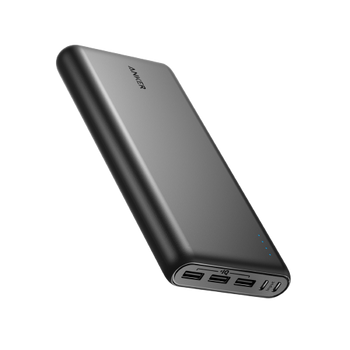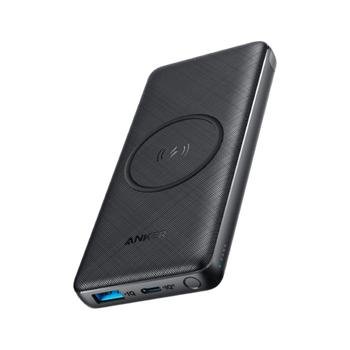- Massive capacity
- Can charge multiple devices simultaneously
- Fast recharging with dual input ports
- Safety features for secure charging
- Wireless charging capability
- Multiple charging options
- High capacity
- Safety features for secure charging
- Bulky and heavy
- Takes longer to recharge
- Slightly bulky
- Wireless charging is slower
Anker PowerCore 26800 vs Anker PowerCore III 10000 Wireless
When it comes to staying powered on-the-go, Anker portable chargers are a popular choice among consumers. Two notable models from the brand are the Anker PowerCore 26800 and the Anker PowerCore III 10000 Wireless. While both products share some similarities, they also have distinct differences that set them apart. In this comparison, we'll delve into the features, benefits, and drawbacks of each model to help you decide which one best suits your needs.
Capacity and Charging Speed
The Anker PowerCore 26800 boasts an impressive capacity of 26,800mAh, making it suitable for charging larger devices like laptops or tablets multiple times. In contrast, the Anker PowerCore III 10000 Wireless has a more modest capacity of 10,000mAh, which is better suited for smaller devices like smartphones or wireless earbuds.
In terms of charging speed, both models support fast charging, but the PowerCore 26800 has a faster output of up to 30W, while the PowerCore III 10000 Wireless tops out at 18W. However, the latter model makes up for this with its wireless charging capability, allowing you to charge your devices without the need for cables.
Design and Portability
The Anker PowerCore 26800 has a more traditional design, with a rectangular shape and a weight of approximately 1.3 pounds. While it's not overly heavy, it's still a relatively large device that may not fit comfortably in smaller pockets or purses.
On the other hand, the Anker PowerCore III 10000 Wireless has a sleeker, more compact design, weighing in at around 0.5 pounds. Its smaller size and rounded edges make it easier to carry around, and its wireless charging pad on top adds a touch of modernity to its overall aesthetic.
Features and Functionality
Both models feature multiple USB ports for simultaneous charging, but the PowerCore 26800 has three ports (two USB-A and one micro-USB), while the PowerCore III 10000 Wireless has two ports (one USB-A and one USB-C). The latter model also supports wireless charging, as mentioned earlier, which is a convenient feature for those with compatible devices.
In terms of safety features, both models have built-in protections against overcharging, overheating, and short circuits. However, the PowerCore III 10000 Wireless has an additional feature called "Trickle-Charging Mode," which allows it to charge low-power devices like headphones or fitness trackers at a slower rate to prevent overcharging.
Conclusion
When choosing between the Anker PowerCore 26800 and the Anker PowerCore III 10000 Wireless, consider your specific needs and preferences. If you require a high-capacity portable charger for larger devices or multiple charges on the go, the PowerCore 26800 may be the better choice. However, if you prioritize convenience, compactness, and wireless charging capabilities, the PowerCore III 10000 Wireless is an excellent option.
Ultimately, both models demonstrate why Anker portable chargers are a trusted brand in the industry – they offer reliable performance, innovative features, and durable construction. By weighing the pros and cons of each model, you can select the perfect Anker portable charger to keep your devices powered up and ready to go, no matter where life takes you.































